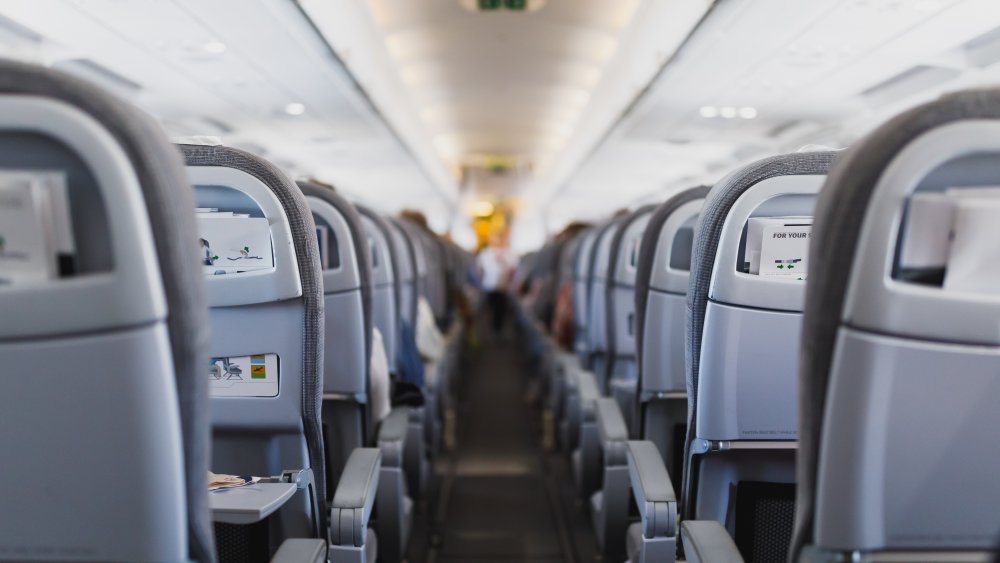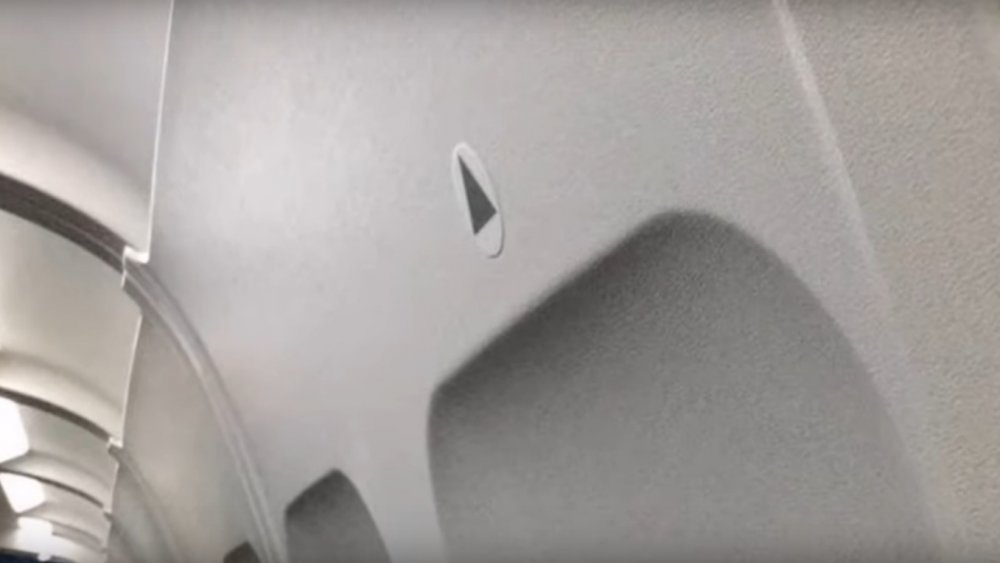What Those Triangles Inside Airplanes Really Mean
Whether you've only been on one airplane in your life, or are lucky enough to fly every other weekend, there are many things about the commercial passenger flight experience which are mysteries. For example, what the heck does "doors to arrival and crosscheck" even mean? Also, why is there that tiny little hole in each window? And, most bizarrely of all, if you're an observant passenger, you've probably noticed that on each side of the cabin walls there are one or two tiny little triangles, either black or red, perched up above the windows of seats near the wings. What's the deal with that? It's not some creepy representation of the Bermuda Triangle, right? Yikes!
Well, while you might've already written off the triangle as one of those obscure everyday things you never knew the purpose of — or, perhaps, just a weird decorative touch — the truth behind is a lot more practical than you might think.
They call it the William Shatner seat
No, the triangles on each side of the plane aren't some weird extraterrestrial markings. However, they are nicknamed the William Shatner seats, according to the Telegraph, which is an inside reference not to the big man's Star Trek days, but rather, his guest appearance on an early Twilight Zone episode, wherein he sits in that very seat, looks out the window, and witnesses a leering monster perched on the wing of the plane. Creepy stuff.
Now, if you spent your last six-hour flight across the continental U.S. staring at that triangle and trying to figure it out, you probably noticed that each one is positioned adjacent to the front or back of the wings of the plane. According to Business Insider, these triangles are placed this way not because they provide the grooviest photo opportunities (though they do!) but because these particular windows provide the best location for the flight crew to inspect the slats and flaps of the plane's wings, to make sure everything is functioning correctly. That way, if something feels off, the nice person passing out pretzels doesn't need to count windows to find the wings, but can simply look for a triangle. Brilliant! Evidently, this is particularly important when temperatures drop in the winter, to make sure the wings don't ice over.
Believe it or not, this isn't the only benefit to these triple-sided helpers. For instance, do you have a weak stomach? Then you should sit next to a triangle, according to Reader's Digest, since this area marks the airplane's center of gravity, meaning you'll have the least bumpy ride ever, potential turbulence aside. Good to know! Just don't look out the window, lest you see some freaky ghoul looking back at you from the wing.

